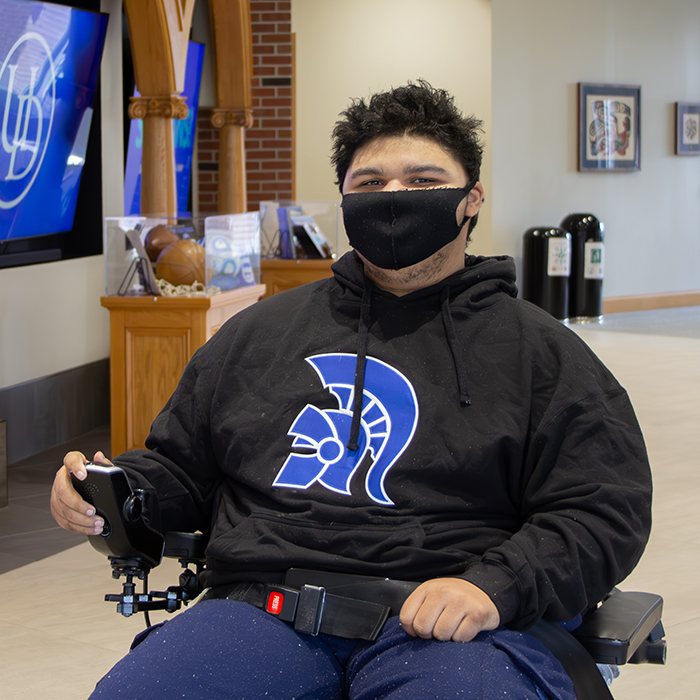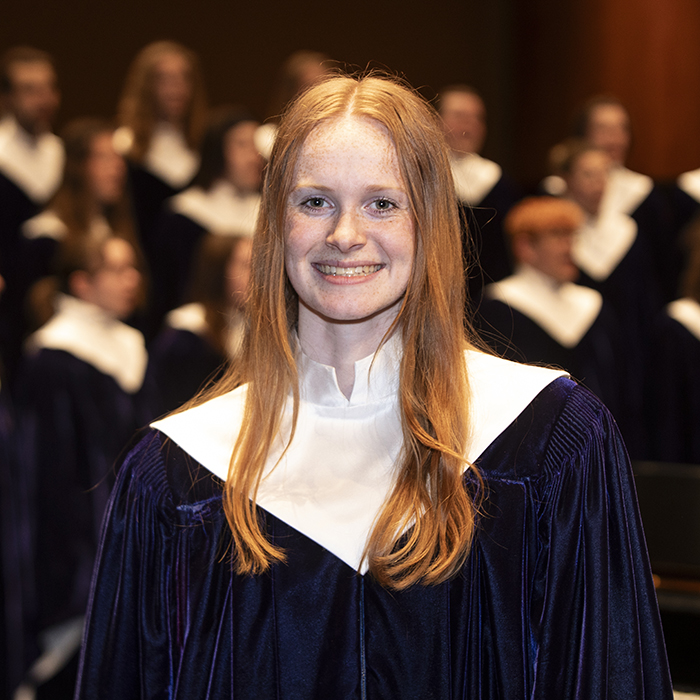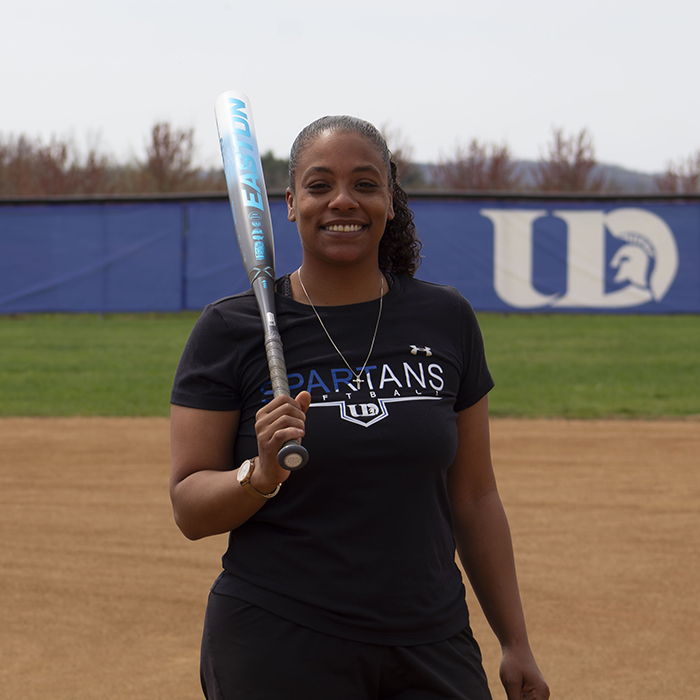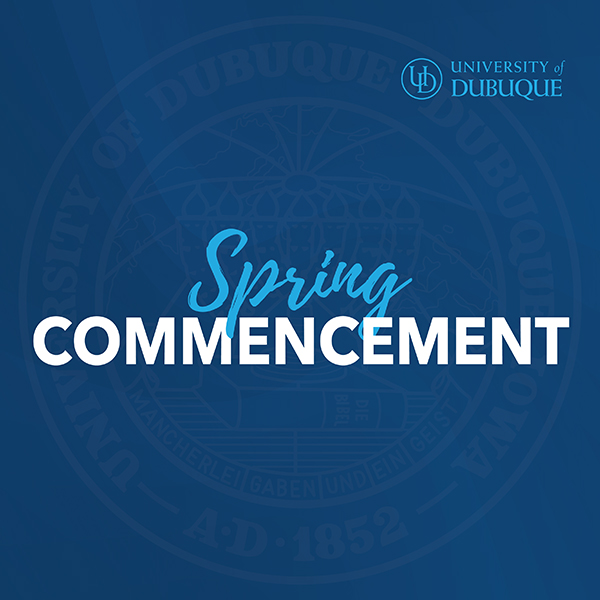Spartans of UD - Richard "Dick" Koos (C'57)
By University Relations Staff
Spartans of UD highlights what makes the University of Dubuque special - the people.
Richard "Dick" Koos (C'57) played a critical role with NASA in the Apollo 11 mission as a simulation supervisor. With less than two weeks before Apollo 11's famed launch to the moon, during a space-flight simulation exercise, he intentionally triggered a simulated computer code alarm that had not been seen before by the Mission Control Center team. With Apollo Guidance Computer alarms going off, the simulated landing was aborted. Dick explained to the MCC team during the debrief that the better decision in that instance was to not abort the mission. This simulation would later prove to be valuable as the same alarm went off during the actual landing mission. After 38 years working for NASA, Dick retired in 1998.
As an undergraduate student, Dick was a mathematics and economics double major. He was a member of the Adrian Singers, the Messengers, and Phi Omicron while at UD. He was also class treasurer.
How did you start working with NASA?
"I always had an interest in engineering. I didn't want a general job; I wanted to do something bigger. I would go to the city and see the buildings and wonder how the big skyscrapers are built. I wanted to figure it out and be part of something bigger. I joined the Army in 1957 and worked on anti-aircraft missile systems. That's where I learned about machine language on early computers like the IBM 650. When I was getting ready to leave the Army and was applying for jobs, I noticed NASA had an ad for a position in a job catalog. I applied in the summer of 1960 and got a call right before leaving the service. I was told to fill out a government application and got a letter and call with a job offer paying $6,500 a year. I immediately said yes. I worked at the Langley Research Center, LRC, in Virginia. It was the world's foremost aeronautical research center, part of NASA at the time. Assigned to the task of putting man in space, Project Mercury was the Space Task Group formed from the LRC. The Space Task Group Operations Division was beginning work in the Mercury Control Center at Cape Canaveral, Florida, on September 19, 1960. The Space Task Group eventually became the Johnson Space Center in Houston."
Less than two weeks before Apollo 11's launch to the moon, you were the simulation supervisor when the simulation team added a new computer alarm code in the training. With alarms going off, the Mission Control Center team aborted the simulated landing. You explained that the safer decision was to not abort the mission. Why did you add in the computer alarm code and why was their decision to abort the simulated mission wrong?
"It was a much riskier action to take only if other flight cues confirmed the 'abort' situation was indicated. The MCC control and simulation teams prepared and planned about how the spacecraft system was to operate. We went through systems to see what actions would have to be taken in case of failure. Immediately after Apollo 10, we began the simulations for Apollo 11 in late spring/early summer of 1969. We planned simulations that would make the computer fail as well as other spacecraft systems. We were doing simulations of the descent to the moon and entered a failure code - Code 1202. Our simulation team didn't think we should abort but the flight team thought they should abort. In the debriefing following the simulation, I said, 'You shouldn't have aborted.' The flight team was directed to then go study what errors they could fly with. Some errors mean you needed to abort; others could be worked around. After studying, the flight team learned that Code 1202 was one that could be worked around, and they didn't need to abort the mission.
"Neil Armstrong wouldn't have aborted because he had an extraordinary sense of how the spacecraft movements would feel if not working properly. But because of the simulations, both the control team and flight team knew they were Okay, and the mission could be successful regardless of program alarm. If they would have aborted the mission, they would have shut down the descent engine, separated from the ascent engine, and would have had to rendezvous and dock with the Command Module that was in orbit."
The decision to add in the computer alarm code proved critical. Can you share how a cheat sheet of those codes created after the simulation helped during the Apollo 11 mission?
"The team had a book of flight rules that they could reference when something went wrong - do this if, do that if - but Code 1202 did not exist until it happened in the simulation testing and the team would not have known the outcome. From knowing the expected outcomes from the cheat sheet based on the simulations made both teams confident in the decisions when it happened in flight. After the simulation, the cheat sheet then had what to do when Code 1202 happened, and they knew quickly what to do in flight; not to be concerned.
"The moon landing was on July 20, 1969. When the Apollo 11 crew was on the mission and the alarms went off with Code 1202, the crew knew what to do and were able to successfully complete the mission. Once things calmed down, astronaut Buzz Aldrin requested radio silence from the control team and asked the world to remember the event while he broke bread and took communion with a small chalice, piece of bread, and wine."
What are some of your fondest memories from your time with NASA?
"I remember Christmas Eve 1968. The astronauts of Apollo 8 were reading from The Book of Psalms and The Book of Genesis while in flight. Those of us on the ground were monitoring the flight and working the Control Center, so of course all of us heard them reading from the Bible through our communication systems. It was neat to hear the passages be read from space. Leading up to that mission, in July 1968, Apollo 8 did an orbit around the moon. That's where the first photos of Earth came from. Apollo 8 was a clean mission - so many parts and pieces had to come together to make it happen. And they did. When I came home from the control center, when the crew took their sleep period, I was putting presents around the tree with Beverly. My daughter Carrie came down the stairs while I was assembling her new bike and she exclaimed excitedly, 'Santa was here.'"
In your opinion, what makes the University of Dubuque unique?
"The students at UD are all people who supported each other. They are all there to learn of course, but the UD community takes care of each other - they took care of me. That's how I felt then. I think that is probably even more true now."



